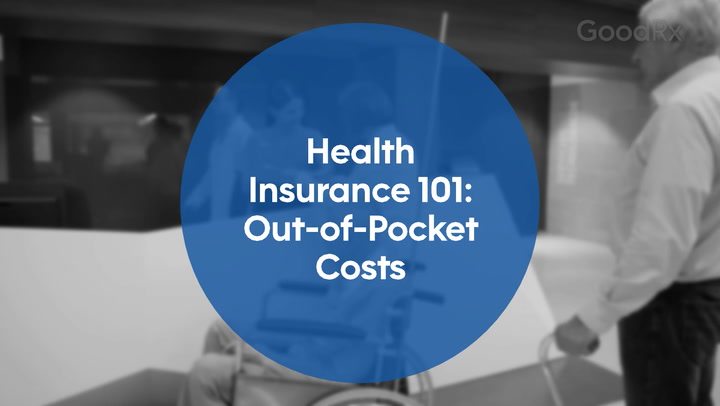
7 Ways to Get Free or Low-Cost Health Insurance
Key takeaways:
Low-cost health insurance is comprehensive coverage with affordable premiums. Through the Affordable Care Act (ACA) marketplace, you may qualify for premium subsidies. These are income-based tax credits that reduce the monthly cost of health insurance.
In 2025, about 4 out of 5 ACA enrollees found a plan for $10 or less per month after premium subsidies.
Government health insurance for people with low incomes include Medicaid and the Children’s Health Insurance Program. These offer coverage with no or low premiums and affordable out-of-pocket costs.
If you don’t have access to affordable health insurance, you may be able to find free or low-cost options for medical care and prescription medications.
Table of contents
Health insurance can be costly. First, you pay premiums for coverage for medical care and prescription medication. Then you often face out-of-pocket costs when you access care. These expenses may include deductibles, copays, and coinsurance. But having health insurance can reduce what you pay when you need care because of cost sharing and negotiated rates for services.
If you qualify for certain government health insurance programs, an Affordable Care Act (ACA) plan with a premium subsidy, or certain alternative health plans, you can reduce the upfront cost of your health insurance.
Here are seven places to look for free or low-cost health insurance.
Search and compare options
1. Affordable Care Act marketplace
The ACA makes affordable health insurance available through federal and state marketplaces. ACA plans offer premium tax credits, also known as premium subsidies. Your potential savings with premium subsidies depends on your income and household size.
In the 2025 coverage year, enrollment in ACA plans reached a record 24 million people. This is, in part, because of generous subsidies from the Inflation Reduction Act of 2022. With these subsidies, about 4 out of 5 consumers found plans for $10 or less a month in 2025.
It’s important to note that the ACA also has insurance options for young adults. Also, Medicaid now covers some people with higher incomes. We will discuss this later.
2. Medicaid
Depending on your income, Medicaid is one of the best ways to access free or low-cost health insurance coverage. As of December 2024, Medicaid and the Children’s Health Insurance Program (CHIP) covered nearly 79 million people nationwide. Medicaid is the largest source of health insurance in the U.S.
Medicaid is a state-federal program administered by all states, Washington, D.C., and five U.S. territories. You can apply for Medicaid through the agency in your state or territory. If anyone in your household qualifies for Medicaid, your ACA application will be forwarded to your state’s Medicaid agency.
Medicaid provides health coverage to pregnant people and parents, older adults, children, and individuals with disabilities. Medicaid eligibility is determined by income and family size, among other factors. Emergency Medicaid, which offers ER coverage, is one of the only federal health insurance programs available to undocumented immigrants.
Keeping your medications if you lose Medicaid. Asking your prescriber for additional refills, switching to generic medications, and using GoodRx can help you save on prescriptions if you lose Medicaid coverage.
Affording your prescriptions. Ways to help your prescription costs fit your budget include filling greater quantities at one time, exploring your eligibility for patient assistance programs, and checking manufacturer savings programs.
Health insurance options before age 26. Up to age 26 (and later in some states), you qualify to join or remain on a parent’s health insurance plan.
3. Children’s Health Insurance Program
As of December 2024, more than 7 million people were enrolled in CHIP. This program covers children whose families earn too much to qualify for traditional Medicaid but can’t afford to buy a private health insurance plan. People who are pregnant or have recently given birth also qualify for CHIP coverage in some states.
4. High-deductible health plan
A high-deductible health plan (HDHP) is a health insurance policy that typically pairs lower monthly premiums with a high deductible. Some employer-sponsored and ACA plans are HDHPs. Before you meet your deductible, an HDHP may cover all of your in-network preventive care. This includes annual exams, certain vaccines, and screenings. But many people with HDHPs aren’t aware of this and don’t take advantage of covered services.
In 2025, HDHPs have a minimum deductible of $1,650 for an individual and $3,300 for a family. But the maximum out-of-pocket costs (excluding premiums) are $8,300 for an individual and $16,600 for a family.
Read more like this
Explore these related articles, suggested for readers like you.
Having an HDHP also gives you the option to enroll in a health savings account (HSA). You can deposit pretax money in an HSA and use it to pay medical costs. In some cases, employers set up HSAs and manage contributions for employees, but you can also set up one on your own.
It’s important to note that catastrophic health plans are considered HDHPs. Catastrophic plans are designed to protect you from incurring costs related to worst-case scenarios, such as serious injury or prolonged illness. Only two groups qualify for catastrophic plans:
Adults under 30
Adults 30 and older who have been granted an affordability or hardship exemption
5. Medicare with Extra Help
If you have Medicare, you may qualify for a Part D low-income subsidy known as Extra Help. This subsidy helps people with limited income pay for their Medicare Part D costs. In 2025, most people with Extra Help will pay:
No monthly premiums for their Part D prescription medication coverage
No Part D deductible
No more than $12.15 for brand-name medications
No more than $4.90 for generic medications
People who live in the 50 states and Washington, D.C., can apply for Extra Help. In American Samoa, the Northern Mariana Islands, Guam, Puerto Rico, and the U.S. Virgin Islands, there are other programs that help Medicare enrollees with limited income pay for prescription medications.
Some people automatically qualify for Extra Help, including:
People with dual eligibility, meaning they are enrolled in Medicare and full Medicaid
Those who receive Supplemental Security Income (SSI)
Those who qualify for one of four Medicare Savings Programs, which are run by Medicaid programs
If you believe you qualify for Extra Help but have not been enrolled automatically, you can apply through the U.S. Social Security Administration. This application is for Extra Help only and doesn’t enroll you in a Part D plan.
6. Medicare special needs plans
Medicare enrollees can choose between original Medicare (Part A and/or Part B) and private alternatives, known as Medicare Advantage. A Medicare special needs plan (SNP) is a Medicare Advantage plan for people who have certain conditions and meet other requirements. SNPs cover some out-of-pocket costs and provide care coordination, among other benefits.
There are three kinds of SNPs:
Chronic condition SNP: This plan type is for people with diabetes, dementia, or another qualifying chronic health issue.
Institutional SNP: This plan type is for people living in a nursing home or an inpatient care center, or who receive a high level of nursing care at home.
Dual-eligible SNP: This plan is for people who qualify for Medicare and full Medicaid.
7. A parent’s plan
If you are younger than age 26, you can get coverage through an insured parent’s health plan. You qualify even if you’re married, you’re a parent, you’re not claimed as a dependent, or you don’t live at home. (The maximum age is higher in some states if you meet certain requirements.) This coverage rule applies if your parent has job-based insurance or an ACA plan. Any extra cost of covering you under one of these plans is typically much lower than buying a separate plan.
Beware of low-cost healthcare offers that aren’t insurance
If you’re not getting a health plan through your employer, the ACA marketplace, or an insurance company, you might not be buying insurance. That’s because not all products that offer help covering medical costs are insurance. Beware of healthcare sharing ministries (known as medical cost-sharing programs) and nonlicensed risk-sharing plans. These arrangements don’t have the same consumer protections, insurance department regulation, or claims payment guarantees as health insurance plans.
Where can I go for free or low-cost medical care without insurance?
Hospitals, clinics, and other organizations may offer free or low-cost healthcare services. These include medical care and prescription medications. They’re available to people who don’t have health insurance. Here are some places you might be able to find affordable care.
Federally qualified health centers
Federally qualified health centers, or FQHCs, are community-based facilities that offer primary care services. FQHCs are funded by the federal government. They provide care to people in underserved populations. Also known as community health centers, FQHCs charge patients based on a sliding scale. This means services are typically not free.
According to the Health Resources & Services Administration (HRSA), FQHCs serve millions of people in the U.S. who are uninsured. Use your ZIP code to find an FQHC using HRSA’s search tool.
Safety net hospitals and clinics
Safety net hospitals and clinics are comprehensive health centers that provide services to people regardless of whether they have health insurance. They are also known as county hospitals, public hospitals, or essential hospitals. These facilities provide billions of dollars in uncompensated care to the uninsured. Search this list to find a safety net hospital, county hospital, public hospital, or essential hospital near you.
Free and charitable clinics
Free and charitable clinics are designed for “medically underserved” people. This includes people without access to insurance. Typically, there is no charge for care. If there is an on-site pharmacy, medications are provided at no cost. The National Association of Free & Charitable Clinics maintains a list of more than 1,400 locations. You can search for a facility near you using the organization’s Find a Clinic tool.
Rural health clinics
Rural health clinics provide primary and preventive care for people covered by Medicare and Medicaid — and may serve people with commercial plans and those who are uninsured. There are more than 4,500 rural health clinics nationwide.
Hospitals with financial assistance programs
Typically, hospitals offer financial assistance programs. They may cover all or part of your medical bills if you qualify. Income-based indigent care and charity care are types of financial assistance programs offered by hospitals. Some hospitals may also offer an uninsured patient discount.
Patient assistance programs
Pharmaceutical companies, nonprofits, and government agencies offer patient assistance programs. These provide free or discounted prescription medications. Typically, you must be uninsured or underinsured to qualify for these programs. There are also programs for conditions and circumstances, such as for people who have a cancer diagnosis and don’t have insurance.
Nonprofit organizations
There are nonprofit groups that help people pay their medical bills. For instance, the Patient Access Network (PAN) Foundation and the HealthWell Foundation offer qualifying people condition-based funds. These can be used to help with copays, transportation costs, and medications.
Frequently asked questions
Healthcare cost-sharing ministries are programs that let people pool their money to pay the medical bills of individuals. These are not considered insurance, so they are not regulated like insurance plans. They do not guarantee full financial help, and individuals remain responsible for their medical debt. Even without insurance, you may have free and low-cost healthcare options in your area. These include charitable clinics, FQHCs, and safety net hospitals that offer indigent (charity) care.
Some people who have household incomes higher than Medicaid’s limits may have trouble finding affordable health insurance. If you make too much for Medicaid, your options for health coverage may include coverage from your employer, your parent’s health plan, your spouse or partner’s health insurance, or Medicare.
The bottom line
Free or low-cost health insurance is comprehensive coverage with affordable monthly premiums. Your options include Affordable Care Act marketplace plans with premium subsidies, high-deductible health plans, low-cost government health insurance — such as Medicaid, the Children’s Health Insurance Program, and Medicare special needs plans — and coverage through a parent’s plan (depending on your age).
If you can’t find affordable health insurance, free or low-cost healthcare services may be available at federally qualified health centers, safety net hospitals, free clinics, and rural health clinics. And you may be able to get help paying for your prescription medications through patient assistance programs. Nonprofit organizations and hospital financial assistance programs may offer help with medical bills.
Why trust our experts?

References
America’s Essential Hospitals. (n.d.). Our members.
Baylor Scott & White Health. (n.d.). Financial assistance options.
Centers for Medicare & Medicaid Services. (2024). Marketplace 2025 open enrollment fact sheet.
Centers for Medicare & Medicaid Services. (2025). Over 24 million consumers selected affordable health coverage in ACA marketplace for 2025.
Garfield, R., et al. (2019). The uninsured and the ACA: A primer - key facts about health insurance and the uninsured amidst changes to the Affordable Care Act. KFF.
HeathCare.gov. (n.d.). Health coverage exemptions: Forms & how to apply. Centers for Medicare & Medicaid Services.
HealthCare.gov. (n.d.). How to pick a health insurance plan: Catastrophic health plans. Centers for Medicare & Medicaid Services.
HealthCare.gov. (n.d.). People under 30: How to get or stay on a parent’s plan. Centers for Medicare & Medicaid Services.
Health Resources & Services Administration. (2024). Health Center Program award recipients.
HealthWell Foundation. (n.d.). When health insurance is not enough.
HRSA Data Warehouse. (n.d.). Find a health center. Health Resources & Services Administration.
HRSA Health Center Program. (2025). Impact of the health center program. Health Resources & Services Administration.
Internal Revenue Service. (2024). Revenue procedure 2024-25.
KFF. (2024). Preventive services covered by private health plans under the Affordable Care Act.
Medicaid.gov. (n.d.). Postpartum care. Centers for Medicare & Medicaid Services.
Medicaid.gov. (2025). December 2024 Medicaid & CHIP enrollment data highlights. Centers for Medicare & Medicaid Services.
Medicare.gov. (n.d.). Help with drug costs. Centers for Medicare & Medicaid Services.
Medicare.gov. (n.d.). Medicaid. Centers for Medicare & Medicaid Services.
Medicare.gov. (n.d.). Medicare Savings Programs. Centers for Medicare & Medicaid Services.
Medicare.gov. (n.d.). Special Needs Plans (SNP). Centers for Medicare & Medicaid Services.
Medicare Interactive. (2025). How to apply for Extra Help. Medicare Rights Center.
National Association of Community Health Centers. (n.d.). What is a community health center?
The National Association of Free & Charitable Clinics. (n.d.). Find a clinic.
National Association of Insurance Commissioners. (2022). Not all products are health insurance: Health care sharing ministries, discount plans and risk-sharing plans.
Patient Access Network Foundation. (n.d.). We’re here to help with out-of-pocket costs.
Rural Health Information Hub. (2025). Rural health clinics (RHCs).
Shafer, P. R., et al. (2023). High deductible health plans and use of free preventive services under the Affordable Care Act. INQUIRY: Journal of Health Care Organization, Provision, and Financing.
Thomas, J. (2025). What are the 4 types of Medicare savings programs? National Council on Aging.
U.S. Social Security Administration. (n.d.). Extra Help with Medicare prescription drug plan costs.
U.S. Social Security Administration. (n.d.). Supplemental Security Income (SSI).




























